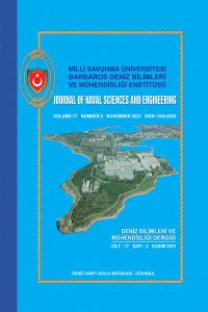An Application Of Investigation On Prediction Of Smoke Production In A Tunnel Fire By Using A Computer Simulation
Yangın, CFD, Saha modellemesi, Tünel yangınları
An Application Of Investigation On Prediction Of Smoke Production In A Tunnel Fire By Using A Computer Simulation
Fire, CFD, Field modeling, Tunnel Fire,
___
- Kevin B. McGrattan, Anthony Hamins, 2001, Numerical Simulation of the Howard Street Tunnel Fire, Fire Research Division Building and Fire Research Laboratory.
- A.R.Nilsen, T.Log, 2009, Results from three models compared to full- scale tunnel fires tests Fire Safety Journal 44 (2009) 33– 49.
- J. Collazo, J. Porteiro *, D. Patiño, J.L. Miguez, E. Granada, J. Moran, 2009, Simulation and experimental validation of a methanol burner, Fuel 88 (2009) 326–334.
- I.S. Lowndesa, S.A. Silvestera,, D. Giddingsb, S. Pickeringb, A. Hassanb, E. Lester, 2007, The computational modelling of flame spread along a conveyor belt, Fire Safety Journal 42 (2007) 51–67.
- F. Liu, J.X. Wen, 2002, The effect of turbulence modelling on the CFD simulation of buoyant diffusion flames, Fire Safety Journal 37 (2002) 125–150.
- D. Rusch, L. Blum, A. Moser, T. Roesgen, 2008, Turbulence model validation for fire simulation by CFD and experimental investigation of a hot jet in crossflow, Fire Safety Journal 43 (2008) 429–441.
- J.P. Kunsch, 2002, Simple model for control of fire gases in a ventilated tunnel, Fire Safety Journal 37 (2002) 67–81.
- C.C. Hwang_, J.C. Edwards, 2005, The critical ventilation velocity in tunnel fires—a computer simulation, Fire Safety Journal 40 (2005) 213– 244.
- Y. Wu, M.Z.A. Bakar, 2000, Control of smoke Flow in tunnel fires using longitudinal ventilation systems a study of the critical velocity, Fire Safety Journal 35 (2000) 363}390.
- Sherman C.P. Cheunga, Richard K.K. Yuena,, G.H. Yeohb, Grace W.Y. Cheng, 2004, Contribution of soot particles on global radiative heat transfer in a two-compartment fire, Fire Safety Journal 39 (2004) 412–428.
- Karim Van Maele, Bart Merci, 2008, Application of RANS and LES field simulations to predict the critical ventilation velocity in longitudinally ventilated horizontal tunnels, Fire Safety Journal 43 (2008) 598–609.
- ISSN: 1304-2025
- Yayın Aralığı: 2
- Başlangıç: 2003
- Yayıncı: Milli Savunma Üniversitesi Deniz Harp Okulu Dekanlığı
Hüseyin Yavuz YÜCESOY, Murat VURAL
ENİZ SUYU SOĞUTMALI ISI DEĞİŞTİRİCİLERDE MALZEME SEÇİMİ
DALGA ENERJİSİ JENERATÖRLERİNDE KULLANILAN GÜÇ DÖNÜŞÜM SİSTEMLERİNİN İNCELENMESİ
İlkay Özer ERSELCAN, Abdi KÜKNER
BENZETİMLE ENİYİLEME İÇİN ÇOKLU META-SEZGİSELLER
